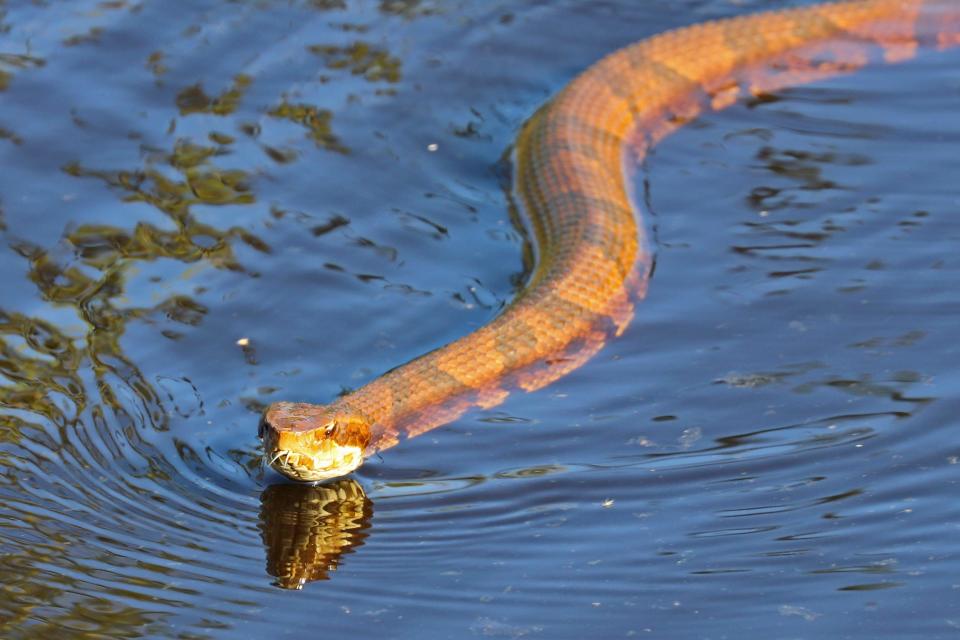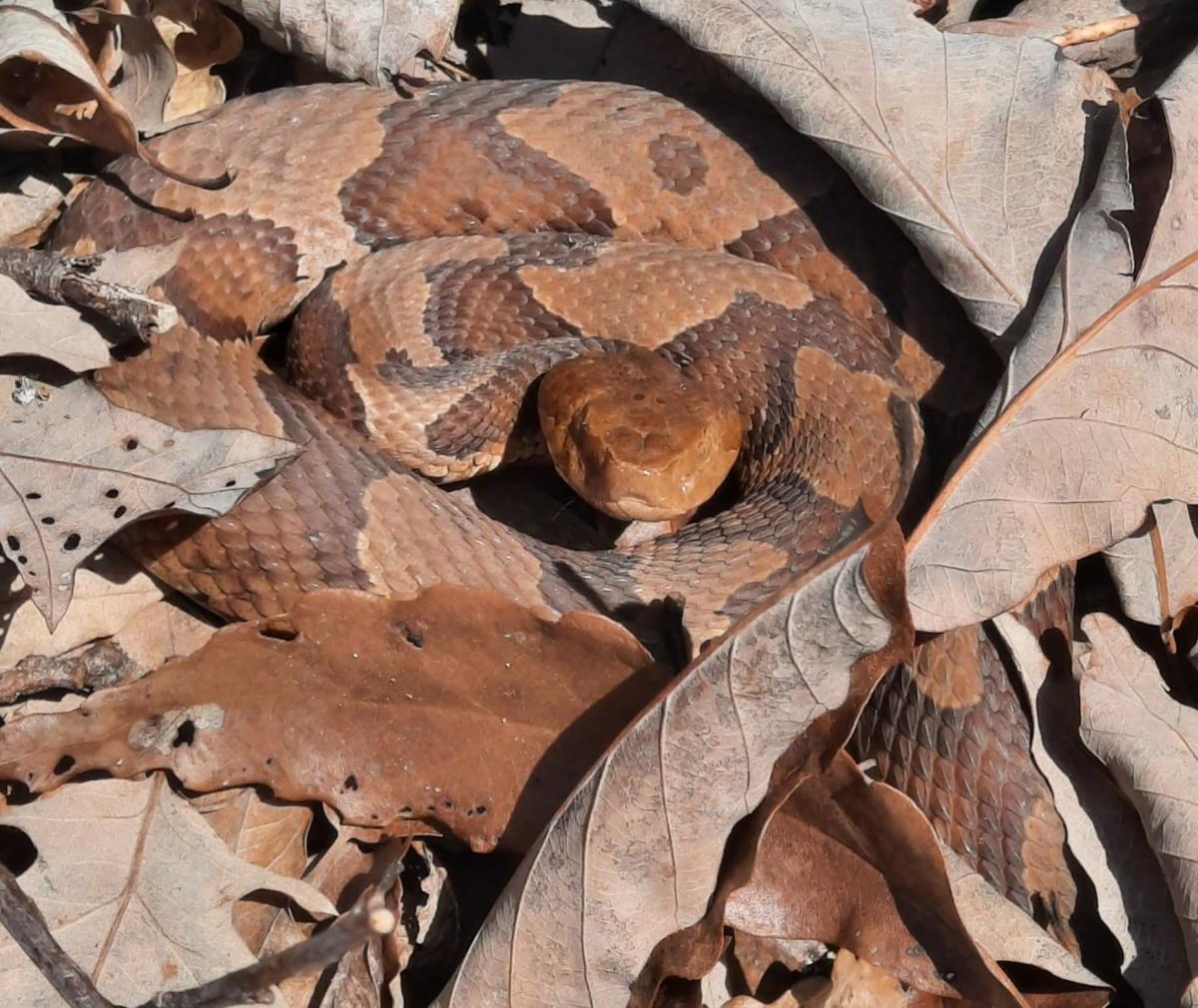Snakes often get a bad rap.
While they’re often misunderstood as aggressive, many experts will tell you they are not naturally hostile and don’t seek to chase or attack. Instead, they are defensive animals that react to perceived threats. Sometimes, that threat is a human — and understandably so, given our size compared to theirs.
We can safely coexist with these important predators by respecting their space and taking proper precautions. Remember, you’re more likely to get bitten while attempting to kill a snake than if you simply leave it alone.
In fact, you’re five times as likely to die from a lightning strike as from a venomous snake bite — lightning strikes result in an average of 28 deaths annually, while venomous snake bites cause about five deaths, despite there being 7,000 to 8,000 bites each year.
Here’s how to navigate spring in Texas, when snakes are most active in the wild, reduce the risk of bites, and know what to do if you encounter a venomous snake.
How many venomous snakes are in Texas?
Although there are more than 100 snake species and subspecies in Texas, there are only four groups of venomous snakes. If you can safely identify them, you have a better chance of avoiding bites.
Copperheads have light-colored bodies with reddish-brown circular bands. They tend to live in rocky areas and wooded bottomlands that have ample moisture. They grow to be about 2 feet long, and their bites don’t normally kill humans because of their short fangs and minimal venom. There are three subspecies of copperheads in Texas, and their patterns vary.
Coral snakes have red, yellow and black rings around their bodies. They grow to about 2½ feet and live in woodlands and canyons. Their bites deliver one of the most lethal types of venom in North America. However, their behavior is typically more elusive, and unlike pit vipers, they will often retreat from any signs of danger rather than confront any potential threats.
Cottonmouths, also known as water moccasins because they tend to live in swamps, lakes and rivers, are usually dark brown, olive green or black, with wide, dark bands along their bodies. They grow to about 3½ feet long. If threatened, cottonmouths will display white tissue inside their mouths, from which they get their name.

Rattlesnakes come in various forms. The most common throughout the state is the western diamondback rattlesnake, which has a brown body with dark brown, diamond-shaped markings down the middle of its back and black and white alternating rings near its rattles. They grow to about 4 feet in length, but they can reach 7 feet.

A young Western diamondback rattlesnake like this one, the most widespread and populous species of venomous snake in Texas, was spotted last week at Texas A&M University-San Antonio.
What to do if a rattlesnake rattles at you
Here’s what to do if a rattlesnake rattles at you, according to a recent story from the Arizona Republic.
-
Stop and stay calm: If you hear the distinct rattle of a rattlesnake, stop immediately. Panicking or making sudden movements can agitate the snake further.
-
Assess the situation: Determine the location of the rattlesnake and give it space. Back away slowly and cautiously, while keeping your eyes on the snake to monitor its movements.
-
Maintain distance: Keep a safe distance from the rattlesnake. Remember, they typically strike only if they feel threatened or cornered. Give the snake plenty of room to retreat.
-
Do not approach or agitate: Avoid attempting to handle or provoke the snake. Refrain from throwing objects at it or trying to move it. Stay still and allow the snake to move away on its own.
-
Leave the area safely: Once you’ve safely distanced yourself from the rattlesnake, carefully leave the area. Avoid walking through tall grass, rocky areas, or other places where snakes may hide, such as wildflower or bluebonnet patches.
-
Seek medical attention if bitten: If you or someone else is bitten by a rattlesnake, seek medical attention immediately. Call emergency services or go to the nearest hospital. Do not attempt to treat the bite yourself.
What to do if a venomous snake bites you
Here’s what to do if a venomous snake bites you, according to a recent story from the Arizona Republic.
-
Stay calm: Panicking can increase your heart rate and spread the venom more quickly.
-
Call for help: Call 911 immediately. Time is of the essence.
-
Immobilize the bite area: Keep the bitten area immobilized and positioned at or slightly below the level of your heart. This can help slow the spread of venom.
-
Remove jewelry and tight clothing: Remove jewelry or tight clothing near the bite site. Swelling can occur rapidly and these items may constrict blood flow.
-
Do not apply ice or tourniquets: Contrary to popular belief, applying ice or using a tourniquet can actually worsen the effects of a venomous snake bite by slowing blood flow.
-
Do not attempt to suck out venom: This is not effective and can cause further damage to the wound.
-
Go to a hospital or urgent care: If possible, have someone drive you to the nearest hospital or medical facility equipped to handle snake bites. If an ambulance is available, it may be best to wait for emergency medical personnel to arrive. Note that all pit vipers — cottonmouths, copperheads, and rattlesnakes — require the same antivenom, and most hospitals have a good supply on hand.
This article originally appeared on Austin American-Statesman: What happens if a Texas rattlesnake bites you? See list of dos and don’ts
snake bites, venomous snake, Rattlesnakes, Texas, lightning strike, Snakes
#Texas #home #venomous #snake #species #Heres #rattlesnake #bites

